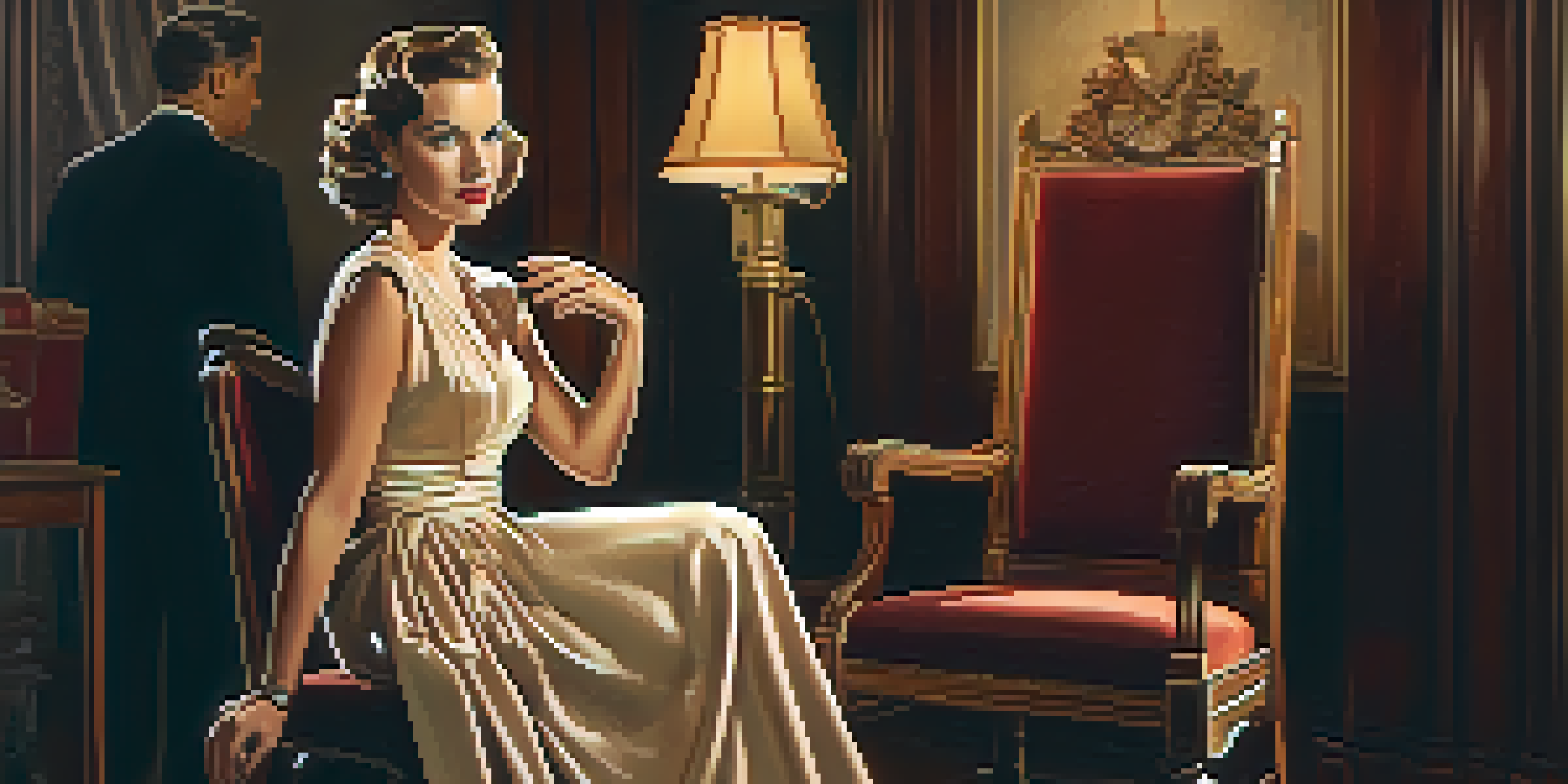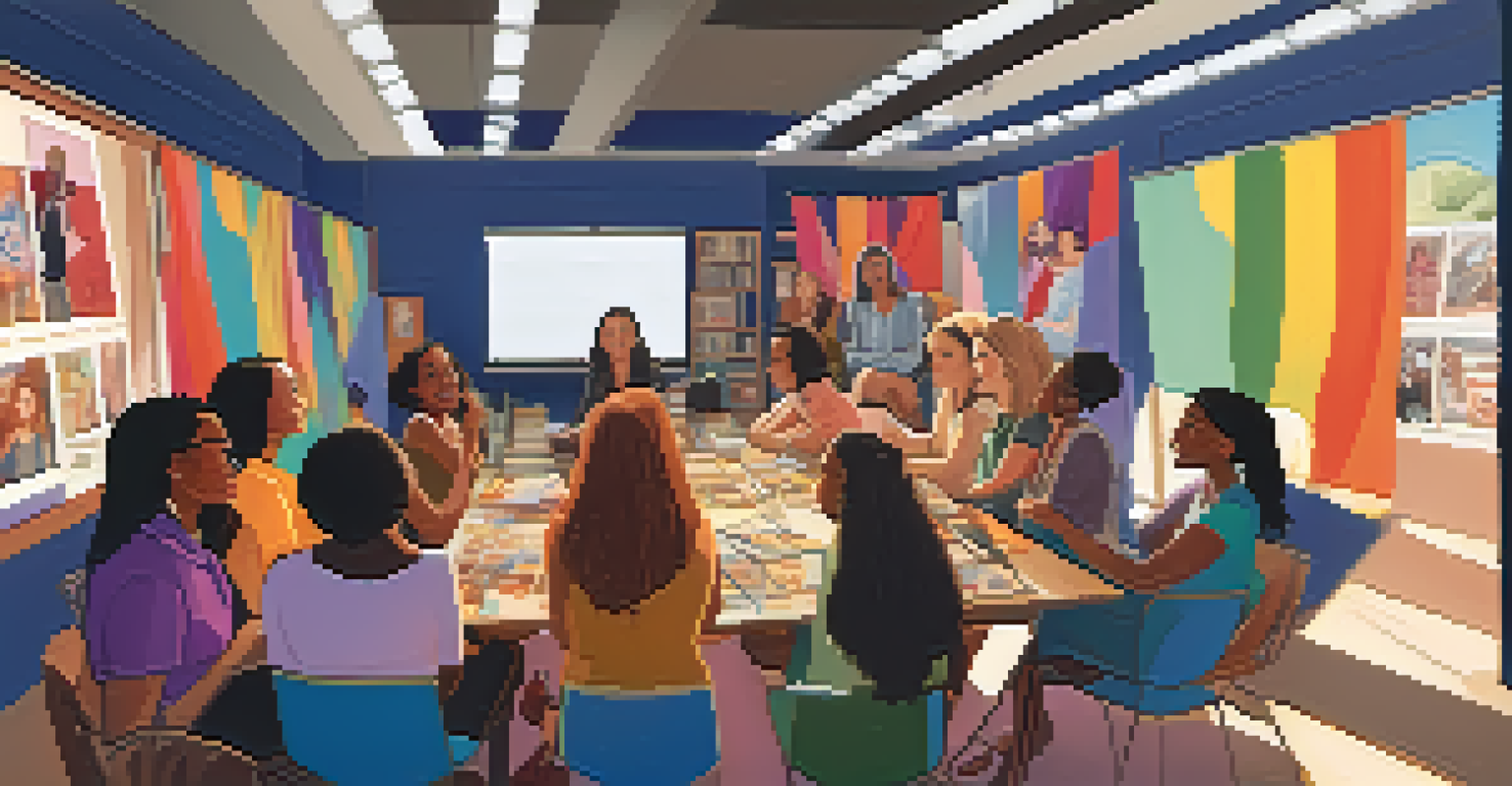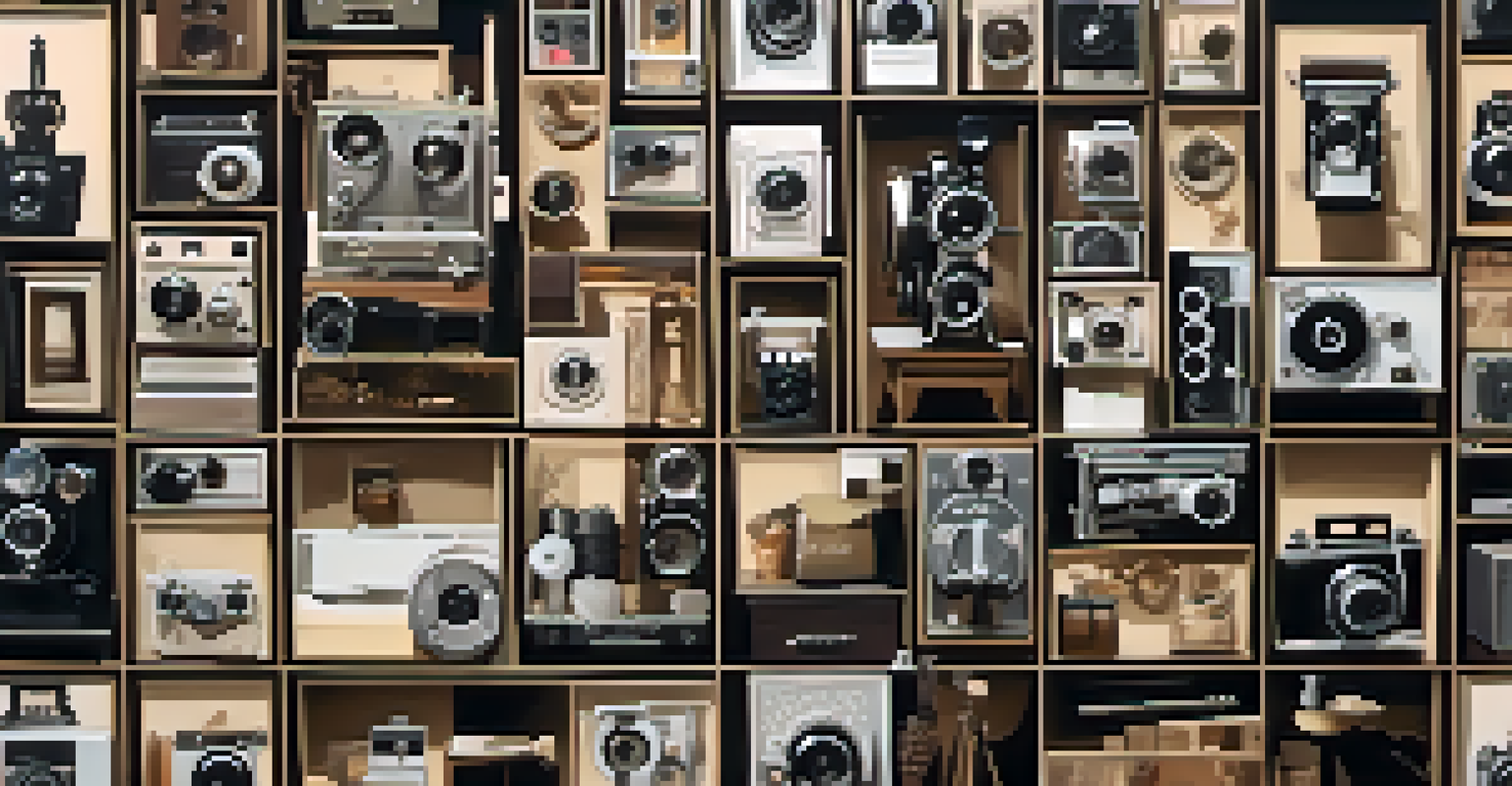The Male Gaze: Gender Expectations in Classic Hollywood Films

Understanding the Male Gaze in Film Theory
The term 'male gaze' refers to the way visual arts depict women from a masculine, heterosexual perspective. This concept, introduced by feminist film theorist Laura Mulvey in the 1970s, suggests that films often objectify women, turning them into subjects of male desire. Essentially, it implies that women are seen through a lens that prioritizes male pleasure and viewpoint, shaping not only their portrayal but also the audience's perception of gender roles.
The gaze of the male viewer has been an enduring influence in cinema, shaping narratives and characterizations that often limit female representation.
In classic Hollywood films, this gaze is often evident in how female characters are framed and what roles they occupy. For example, many films of the era presented women primarily as love interests or objects to be pursued, rather than as fully realized characters with their own agency. This trend not only reinforces traditional gender roles but also creates a narrow narrative around women's identities, reducing them to mere reflections of male desires.
Understanding the male gaze is crucial for dissecting how gender expectations have evolved in cinema. By recognizing these patterns, viewers can become more critical of the media they consume and advocate for more diverse and realistic representations of women. As we delve deeper into classic Hollywood, we can see how these portrayals impacted societal views on femininity, sexuality, and power.
The Impact of Gender Roles in Classic Films
Classic Hollywood films often adhered to strict gender roles that dictated how men and women should behave. Male characters typically exuded power and dominance, while female characters were portrayed as supportive and submissive. This binary division not only reinforced societal expectations but also limited the scope of female representation on screen, leaving little room for complexity or individuality.

For instance, in films like 'Casablanca,' the female lead, Ilsa, is often caught in a love triangle that highlights her role as a passive object of desire rather than an active participant in her own story. Such portrayals can lead audiences to internalize these dynamics, believing that women's worth is tied to their relationships with men. Consequently, these narratives perpetuate harmful stereotypes and dictate how both genders are expected to behave in real life.
The Male Gaze in Film Defined
The male gaze illustrates how women are often objectified in films through a masculine perspective, shaping audience perceptions of gender roles.
As we reflect on these films, it's important to recognize the long-term effects they can have on cultural attitudes towards gender. By critically examining the roles assigned to men and women in classic cinema, we can better understand how these portrayals have shaped societal norms and expectations. This awareness is vital for fostering a more inclusive media landscape that celebrates diverse narratives.
Iconic Films and Their Gender Expectations
Several classic films exemplify the expectations placed on gender and the male gaze. Take 'Gone with the Wind,' for instance, where Scarlett O'Hara's character embodies the tension between independence and the societal need for women to be desirable. Her journey is largely defined by her romantic pursuits, showcasing how even strong female characters are often measured against their relationships with men.
Film is a powerful medium that can either reinforce stereotypes or challenge them, and it is the responsibility of filmmakers to decide which path to take.
Similarly, in 'Breakfast at Tiffany's,' Holly Golightly is portrayed as a free-spirited woman, yet her character ultimately revolves around her desire to attract a wealthy suitor. This reinforces the notion that a woman's ultimate goal should be to secure a man, perpetuating the idea that female independence is secondary to romantic success. Such films highlight how gender expectations are woven into the narrative fabric of classic cinema.
By examining these iconic films, it becomes clear how deeply ingrained gender roles have influenced storytelling in Hollywood. These narratives not only shape individual identities but also reflect and reinforce societal norms. Understanding these portrayals allows us to appreciate the progress made in contemporary cinema while recognizing the need for further change.
The Role of Female Filmmakers in Challenging Norms
While classic Hollywood is often dominated by male directors and writers, female filmmakers have historically pushed back against the male gaze. Directors like Dorothy Arzner and Ida Lupino broke through the glass ceiling, creating films that offered more nuanced portrayals of women. Their work challenged the traditional narratives and provided female characters with greater depth and agency, shifting the focus away from mere objectification.
These pioneering women often explored themes of independence, strength, and the complexities of female identity, setting the stage for future generations of filmmakers. For instance, Arzner's films frequently featured strong female leads who defied societal expectations, paving the way for a richer exploration of women's experiences in cinema. This shift not only provided audiences with more relatable stories but also encouraged critical discussions about gender representation in film.
Impact of Gender Roles in Cinema
Classic films perpetuate strict gender roles that limit female representation and reinforce harmful stereotypes about women's worth.
The contributions of female filmmakers are essential to understanding how the industry has evolved. Their efforts have not only challenged existing norms but also inspired a new wave of storytelling that prioritizes diverse voices and perspectives. As we continue to explore gender expectations in film, recognizing these contributions is vital for appreciating the progress made and the work still needed.
Cultural Shifts and the Evolution of the Male Gaze
As society evolves, so too does the representation of gender in film. The cultural shifts of the late 20th and early 21st centuries have prompted filmmakers to reevaluate the male gaze and the way women are portrayed on screen. Recent films have begun to challenge the traditional narratives, allowing for a more diverse range of female experiences and identities to be explored.
For example, films like 'Wonder Woman' and 'Lady Bird' showcase strong female leads who are not solely defined by their relationships with men. These characters are allowed to pursue their own goals, embodying a more empowered and complex representation of femininity. This shift reflects a growing recognition of the importance of authentic storytelling that resonates with audiences across gender lines.
However, while progress has been made, the remnants of the male gaze still linger in many aspects of cinema. It’s essential for both audiences and creators to remain vigilant about these portrayals, advocating for stories that challenge outdated norms and promote gender equality. By doing so, we can fully appreciate the strides made in contemporary filmmaking while continuing to push for a more equitable industry.
The Intersection of Race, Gender, and the Male Gaze
While the male gaze primarily critiques gender representation, it also intersects with issues of race and ethnicity. Classic Hollywood often marginalized women of color, subjecting them to stereotypes that further reinforced the male gaze. These portrayals not only objectified women but also perpetuated harmful racial stereotypes, creating a narrow understanding of femininity and beauty in cinema.
For instance, characters like the 'exotic' femme fatale or the 'mammy' trope exemplify how women of color were often relegated to supporting roles that catered to racial biases. This intersectionality is crucial for understanding the broader implications of the male gaze, as it highlights how different identities experience representation in distinct ways. The lack of authentic portrayals contributes to a limited narrative that fails to capture the richness of diverse experiences.
Future of Gender Representation
There is a growing movement towards inclusive storytelling in film, emphasizing diverse voices to challenge traditional narratives and the male gaze.
Today, filmmakers are increasingly aware of these intersections and are working to create more inclusive representations. By centering the voices and experiences of women of color, contemporary cinema has the opportunity to challenge the traditional male gaze and redefine beauty standards. This evolution is essential for fostering a more equitable industry that reflects the diverse tapestry of human experiences.
Looking Ahead: The Future of Gender Representation in Film
As we consider the future of gender representation in film, it's clear that ongoing dialogue and advocacy are essential. The film industry is gradually shifting towards more inclusive practices, with increased opportunities for women and marginalized voices. This evolution presents an opportunity to dismantle the male gaze and embrace a more equitable approach to storytelling that celebrates diversity and authenticity.
Future filmmakers are tasked with not only creating narratives that challenge traditional gender roles but also ensuring that these stories are told from a variety of perspectives. By incorporating diverse voices, the industry can move beyond the limitations of the male gaze and provide audiences with richer, more complex portrayals of individuals. This shift is vital for fostering empathy and understanding in an increasingly interconnected world.

Ultimately, the journey towards equitable representation in film is ongoing. By remaining engaged and critical of the narratives we consume, we can contribute to a more inclusive media landscape that reflects the realities of all individuals. The future of film lies in its ability to authentically represent the spectrum of human experiences, breaking free from the constraints of the past.